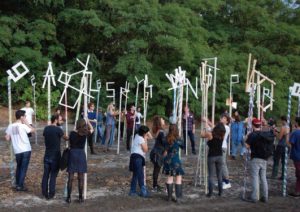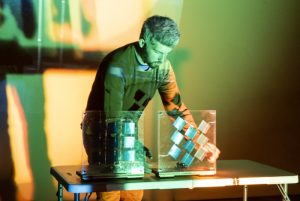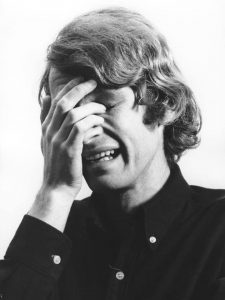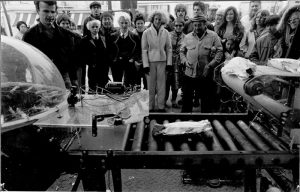Here’s a brief wrap-up of some of the projects at the Berlin University of the Art open doors this weekend.
The Digital Media Design-class of Joachim Sauter and Jussi Ängeslevä had the brief to make Sacral Design this semester – looking at the practices and rituals of religions and trying to engage with them in an electronic way. While I was surprised that people didn’t try more to provoke with their projects and that there’s not a single project about Islam, there are some nifty projects.
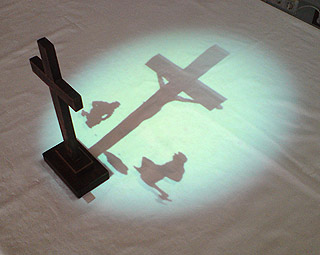
Markus Kison (the maker of Roermond-Ecke-Schönhauser) took up the christian cross to create a piece inspired by Tool’s Life. While the physical cross can sit on a table or altar, the shadows tell what the cross stands for as a symbol in the form of a shadow-film. (Insider information: To get the silhouettes, they did a lot of Monty Python-like filming with funny costumes. But the result doesn’t show and in fact works very well.)
 Jan Lindenberg tried to enhance the Jewish holy book in his project “Living Torah”. Because the actual scroll mustn’t be touched by hand, the Rabbi uses a little hand called Yad on a pole as a reading aid. This is where he intervened by making the Yad trackable via computer vision. The current position is analyzed and a translation from ancient Hebrew into modern-day English can for instance be projected on the physical scroll on the table.
Jan Lindenberg tried to enhance the Jewish holy book in his project “Living Torah”. Because the actual scroll mustn’t be touched by hand, the Rabbi uses a little hand called Yad on a pole as a reading aid. This is where he intervened by making the Yad trackable via computer vision. The current position is analyzed and a translation from ancient Hebrew into modern-day English can for instance be projected on the physical scroll on the table.
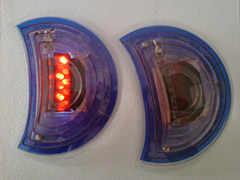
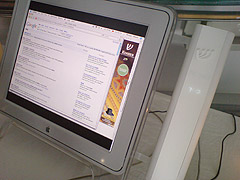
Coming from Taiwan, Effi Wu chose Buddhism as her subject and recreated the traditional practice of asking Buddha questions by throwing two little wodden pieces. Depending on the way they land, it means “yes”, “no” or “smile”, but in a very Buddhist way – you can always throw again while you just tweak the question until you get an answer you like. In her design, the pieces are made of acrylic and equipped with either red or blue LEDs. You throw them into a box that also contains a two-colored Image of Buddha. Depending on the way they land, Buddha’s facial expression looks different, thus simplifying the interpretation of the oracle. Also nice was the digital Mezuzah that you can mount to your screen and which will warn you in case the site you’re looking at is not entirely kosher, protecting your computer as the physical one protects your door.
This year’s pressure-project was about creating Media Lies and you should definitely check out all the projects. There’s even one that is faking an entry on WMMNA, tztz.
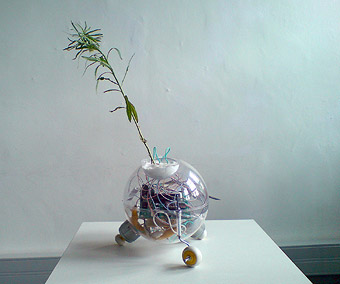
Two more things I really loved: Mandy Meißner’s “Wildgruen”, a plant that can move and communicate. She wired a random branch and attached some wheels and motors as well as a bluetooth-connection to it. In her view, plants need to be freed from their isolation, both in the way that they can only lean towards the sun and can’t make themselves unterstood when they need something. Wildgruen can drive around and will hassle you via your mobile phone when it needs to be watered. Mandy argues that while this project is very much in the spirit of the wide range of plant-related art, her point is to actually foster the relation between humans and so-called cultivated plants that we make live with us.
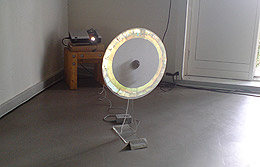
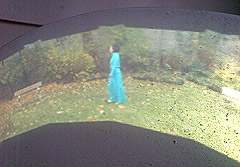
The second work again comes from Effi Wu. The piece called “Null” is a turning disc on which video images of a garden are projected. In the topmost image you see her slowly walking from screen to screen, creating the illusion as if Null was a tiny planet that she walks upon, very beautiful.

